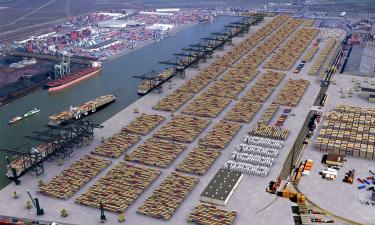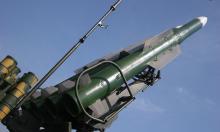Small-scale power engineering is promising sphere
Organic fuel is the main source of energy on the world market, and it is sure to keep the positions in the future. The civilization development rate is extremely great, only one energy source does not seem to be enough for the mankind. Insufficient energy supply may become the key inhibitor for the world economic development within the nearest ten years.
Besides, organic fuel has got several imperfections, that supposes that other energy sources are to be developed. The resources of organic fuel are gradually reducing on the planet. The rate of organic fuel fields exploration is lagging behind the consumption rate. The mankind will face the problem of fuel reserve depletion within the nearest 100-200 years. In addition, the problem of environmental pollution is pressing now; pollution of water, air and soil is mostly intensified by organic fuel burning. One more really important factor is to be mentioned here as well: when construction of water reservoirs at hydroelectric power plants and development of coal, gas and oil fields increase, the land resources reduce and deteriorate.
When using organic fuel we should also keep in mind that the environment is getting worse at that, the fact that can not be ignored. Several years ago we expected nuclear power to become the key alternative to organic fuel burning. However, nuclear power development entailed more problems: safety is to be guaranteed to nuclear power plants, problem of nuclear-waste disposal is to be solved as well, construction of energy generating units became longer and more expensive, etc. Problem of usage of other energy sources having no by-effects is pressing all over the world now.
Last June the State Duma considered the problem “Alternative power engineering is a guarantee of Russia’s steady development”. It was decided then, a development concept, legislative, financial and scientific support are to be worked out for successful development of alternative power engineering. Later a session of a G8 special group on the problem of renewable power engineering took place. A communiquй was compiled then for further adoption in Genoa on July 22. The top-priorities of the communiquй included “the importance of renewable power engineering for steady environmental development and preservation.”
What is renewable power engineering? What are renewable energy sources? Yakov Blyashko, a member of the International energy academy, the director general of the INSET scientific technical association explains the subject.
Renewable energy sources include solar energy, wind, bio, geothermal, wave (flood energy) energies and small-scale hydroenergetics. We can not add large-scale power engineering here, mostly because of environmental problems that arise in construction of powerful hydroelectric plants. Foreign small-scale hydroelectric power plants are those ones with the capacity of up to 30 megawatt and the power of one unit of 10 megawatt. Domestic micro power engineering is traditionally considered to be the one with the units of up to 10 megawatt, mini power engineering – up to 1 megawatt and small-scale power engineering – with the unit capacity of up to 5 megawatt. Nowadays Russia is to adopt the international classification.
- Do you mean, the renewable energy sources will gradually replace the traditional organic fuel?
Absolutely no! I mean, small-scale power engineering and renewable power engineering are not an alternative to the large-scale one. The following fact can not be ignored: large-scale power engineering is designed for power supply, and small-scale one – for electricity supply. Up to 20 millions of Russians use self-regulating power supply, the small-scale power engineering is designed for them. A small hydroelectric power plant can be constructed on the river in a remotesettlement to provide energy supply to the population instead of bringing diesel oil from far away and spending great sums of money at that.
Russia’s national program “Development of non-traditional power engineering in Russia for 2001-2005” mentions three pressing problems, where non-traditional power engineering can be of use. First of all, it can be used for fuel and energy provision of northern and remote parts of the country. Fuel transportation is extremely difficult to these parts of the country. We have been experiencing problems with fuel supply to such northern regions as Chukotka, Kamchatka for several last years. There are several important objects of the Defense Ministry and Federal customs service situated in the remote northern parts of Russia. We also should think about energy supply to these objects.
At the same time, we have got technical and economic opportunities for guarantee of 20% to 50% of the northern energy consumption at the expense of non-traditional renewable energy sources.
One more problem mentioned in the program is “the necessity of environment improvement in the areas of mass recreation and residence of the population with the help of non-traditional energy equipment (solar collectors, thermocompressors, wind facilities, etc.)”
The third pressing problem is “the necessity to increase the generating capacity of deficit energy systems and simultaneous reduction of imported fuel. Limiting de-energizing of consumers and pollutant emissions are to be reduced at that.”
We should also keep in mind the constantly increasing prices for organic fuel, that entails increase of prices for electricity. Now the share of electricity makes up 20% and more in the prime cost.
- Are renewable energy sources cheaper?
Investments in renewable power engineering will be repaid ten times in several years. In several years after construction of a small-scale hydroelectric power plant we will be able to get practically free electricity, no fuel spending will be required. I can mentioned calculations to confirm the statements. Construction of a small-scale hydroelectric power plant with the installed capacity of 500 kilowatt costs about 14,5-15 million rubles. The prime cost of the plant’s electric energy makes up less than 0,45-0,5 rubles/kWh, that is 1,5 times less than the cost of the electric energy sold by the power system itself. Such plant can be constructed within 15-18 months, the construction costs will be repaid within 3,5-5 years. Besides, if we plan to reconstruct a small-scale hydroelectric power plant that had been de-activated earlier, it will cost even 1,5-2 times cheaper.
Foreign countries have already realized the advantage of using renewable energy sources. For example, China, the leader in the sphere of small-scale power engineering, increased the total capacity of small-scale hydroelectric power plants more than three times over the last forty years. The installed capacity of Indian small-scale hydroelectric power plants at the rate of up to 3 megawatt increased to 173 megawatt four years ago, in France – 1,700 small-scale hydroelectric power plants with the capacity of about 1,000 megawatt, the same situation is in Austria, Germany, Switzerland. Russia is not among these countries so far, although we have great resources, that are practically of no use now.
INSET association designs, produces and installs equipment for small-scale power engineering. Unfortunately, 80% of the produce is exported, at the time when 70% of Russia’s territory are not supplied with electric energy.
Svetlana Koulilkova
Translated by Maria Gousseva
Read the original in Russian: https://www.pravda.ru/main/2002/03/22/38635.html
Subscribe to Pravda.Ru Telegram channel, Facebook, RSS!





